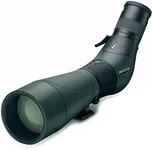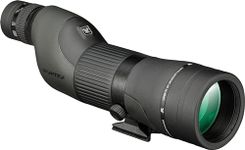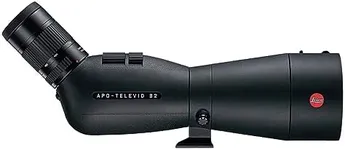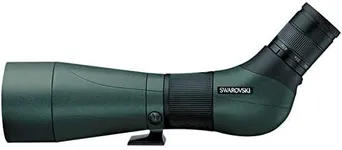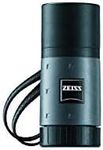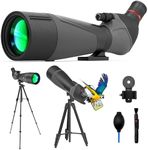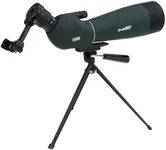Buying Guide for the Best Bird Scopes
Choosing the right bird scope can greatly enhance your bird-watching experience. Bird scopes, also known as spotting scopes, are essential for getting a closer look at birds from a distance. When selecting a bird scope, it's important to consider several key specifications to ensure you get the best fit for your needs. Understanding these specs will help you make an informed decision and enjoy your bird-watching adventures to the fullest.MagnificationMagnification refers to how much closer the bird will appear through the scope compared to the naked eye. This is important because higher magnification allows you to see more details. Bird scopes typically have magnification ranges from 15x to 60x. Lower magnification (15x-30x) provides a wider field of view and is easier to use for tracking moving birds. Higher magnification (30x-60x) offers more detail but can be harder to stabilize and may require a tripod. Choose a magnification range based on your bird-watching habits; if you often observe birds at great distances, higher magnification might be beneficial.
Objective Lens DiameterThe objective lens diameter is the size of the front lens of the scope, measured in millimeters. This spec is crucial because it determines how much light the scope can gather, affecting image brightness and clarity. Larger diameters (60mm-100mm) gather more light, providing brighter and clearer images, especially in low-light conditions. However, larger lenses also make the scope heavier and bulkier. If you often bird-watch in dim light or want the best image quality, opt for a larger objective lens. For portability and ease of use, a smaller diameter might be more suitable.
Field of ViewField of view (FOV) is the width of the area you can see through the scope at a specific distance, usually measured in feet at 1,000 yards. A wider FOV is important for locating and tracking birds, especially those that move quickly. Scopes with a lower magnification generally offer a wider FOV. If you prioritize ease of finding and following birds, look for a scope with a wider FOV. Conversely, if you focus on stationary birds and want more detail, a narrower FOV with higher magnification might be acceptable.
Eye ReliefEye relief is the distance from the eyepiece to your eye where you can still see the full field of view. This is particularly important for eyeglass wearers, as insufficient eye relief can make it difficult to use the scope comfortably. Eye relief typically ranges from 12mm to 20mm. If you wear glasses, look for a scope with at least 15mm of eye relief to ensure a comfortable viewing experience. If you don't wear glasses, shorter eye relief may be acceptable.
Lens CoatingLens coating refers to the special coatings applied to the lenses to reduce glare and improve light transmission, resulting in clearer and brighter images. There are different types of coatings: single-coated, multi-coated, and fully multi-coated. Fully multi-coated lenses offer the best performance by maximizing light transmission and reducing reflections. If you want the best image quality, choose a scope with fully multi-coated lenses. For casual use, single or multi-coated lenses may suffice.
Waterproofing and FogproofingWaterproofing and fogproofing are features that protect the scope from water and internal fogging, ensuring clear views in various weather conditions. These features are important for durability and reliability, especially if you bird-watch in wet or humid environments. Look for scopes that are labeled as waterproof and fogproof, often achieved through O-ring seals and nitrogen or argon purging. If you frequently bird-watch in challenging weather, these features are essential to maintain performance and longevity.
Weight and PortabilityWeight and portability refer to how easy it is to carry and handle the scope. This is important for comfort during long bird-watching sessions and for ease of transport. Heavier scopes with larger objective lenses provide better image quality but can be cumbersome to carry. Lighter scopes are more portable but may sacrifice some image quality. Consider how you plan to use the scope; if you often hike or travel, a lighter, more portable scope may be preferable. For stationary bird-watching, a heavier scope with better optics might be worth the extra weight.
